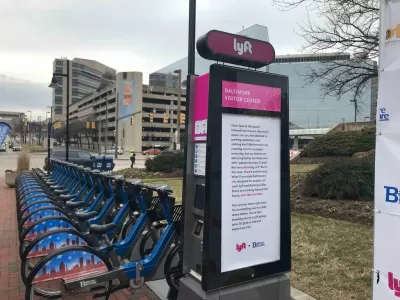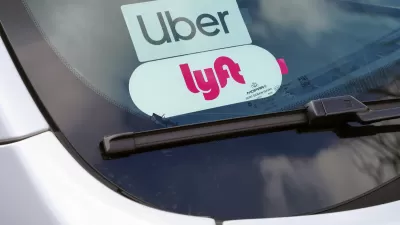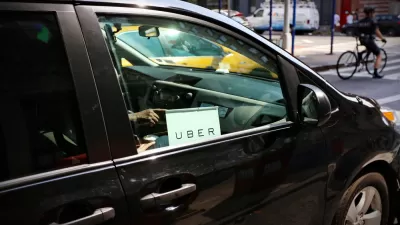After years of resisting efforts by cities to regulate their business and constant—but unprofitable—growth, Uber and Lyft are homing in on their unique strengths.

Despite small differences in their operations and business models, Uber and Lyft have essentially operated as interchangeable services for most customers for years. Now, writes Andrew J. Hawkins, the two transportation network companies (TNCs) are starting to differentiate themselves by centering their operations on each company's specific strengths, as evidenced by earnings reports issued last week by both TNCs.
"Uber’s main side hustle is delivery. Food and other delivery bookings in the fourth quarter grew 33 percent year over year." Meanwhile, Lyft president John Zimmer says his company has no plans to follow suit. "We want to have one main consumer that we’re building for. And again, we will not build a consumer-facing marketplace for groceries or food," Zimmer said. But Lyft has bolstered the micromobility side of its business, reports Hawkins, with bikeshare as its fastest-growing customer base, while Uber has "largely abandoned its two-wheeled operations."
Hawkins notes that, while both companies expressed enthusiasm about autonomous vehicles, both largely sold off their AV divisions, with Lyft still maintaining some ties through a deal with Argo.ai to put its vehicles on Lyft's platform.
The two rideshare giants continue to compete and face some of the same challenges, but, as Hawkins puts it, their recent earnings reports show that the two may take more different paths in the future.
FULL STORY: Uber and Lyft are finally starting to look like different companies

Alabama: Trump Terminates Settlements for Black Communities Harmed By Raw Sewage
Trump deemed the landmark civil rights agreement “illegal DEI and environmental justice policy.”

Planetizen Federal Action Tracker
A weekly monitor of how Trump’s orders and actions are impacting planners and planning in America.

How Atlanta Built 7,000 Housing Units in 3 Years
The city’s comprehensive, neighborhood-focused housing strategy focuses on identifying properties and land that can be repurposed for housing and encouraging development in underserved neighborhoods.

In Both Crashes and Crime, Public Transportation is Far Safer than Driving
Contrary to popular assumptions, public transportation has far lower crash and crime rates than automobile travel. For safer communities, improve and encourage transit travel.

Report: Zoning Reforms Should Complement Nashville’s Ambitious Transit Plan
Without reform, restrictive zoning codes will limit the impact of the city’s planned transit expansion and could exclude some of the residents who depend on transit the most.

Judge Orders Release of Frozen IRA, IIJA Funding
The decision is a victory for environmental groups who charged that freezing funds for critical infrastructure and disaster response programs caused “real and irreparable harm” to communities.
Urban Design for Planners 1: Software Tools
This six-course series explores essential urban design concepts using open source software and equips planners with the tools they need to participate fully in the urban design process.
Planning for Universal Design
Learn the tools for implementing Universal Design in planning regulations.
Jessamine County Fiscal Court
Caltrans
Institute for Housing and Urban Development Studies (IHS)
City of Grandview
Harvard GSD Executive Education
Toledo-Lucas County Plan Commissions
Salt Lake City
NYU Wagner Graduate School of Public Service





























